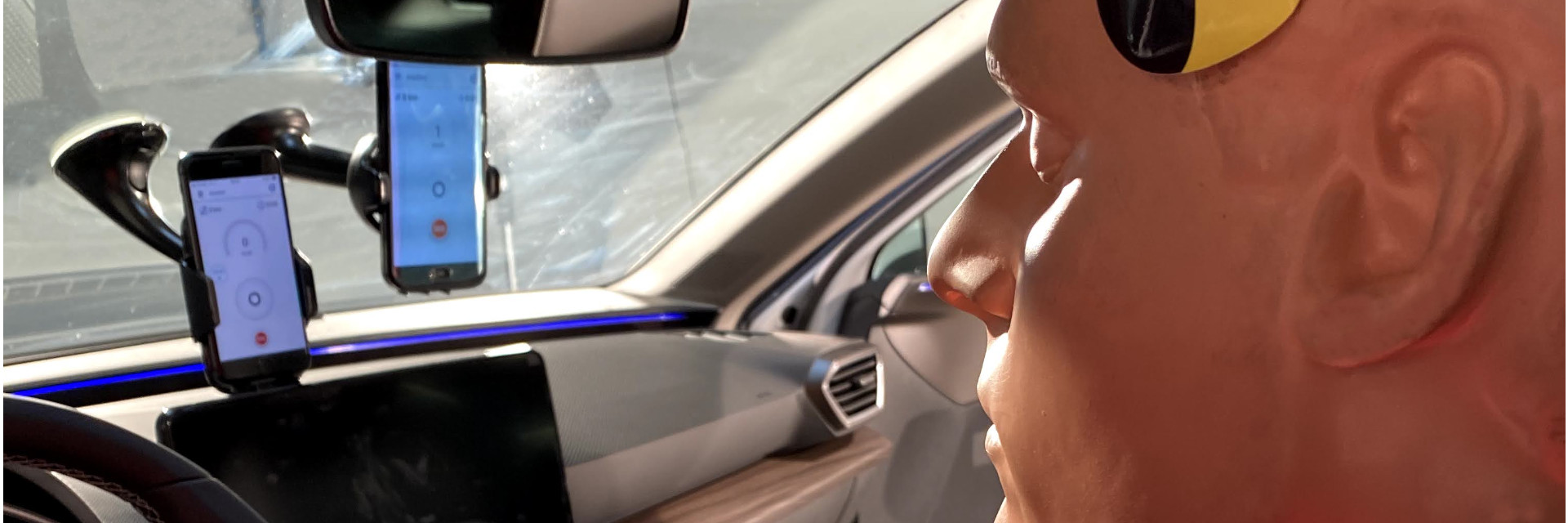
Automatic crash detection provides insurers with early notification of loss (eFNOL) and enables immediate assistance to the policyholder − both for quick and cheap loss settlement and saving their health or life.
How does our crash detection and reconstruction system work?
1. The sensor logs data
To detect road incidents, we use data from gyroscopes, accelerometers and GPS transmitters installed in the insured’s car. These sensors are part of the equipment of all telematics devices that we monitor: beacons, OBD, 12V, smartphones. The data can also come directly from devices fitted on the production line by car manufacturers.
2. Our algorithm decodes the data as information about a crash
How does the system work in practice? Let’s take a look at a solution based on a beacon and a dedicated mobile application. Although the beacon itself looks like a small sticker stuck to the windshield of the car, it can save a person’s life in the moment of a crash! The device connects to the smartphone app via Bluetooth. If it detects G-force that may indicate an accident or a collision, it alerts a dedicated insurer’s unit within a second. The alert includes location of the vehicle, based on the GPS data.
Thanks to advanced algorithms, high-quality devices and regular crash tests carried out at the Spanish CESVIMAP, our solutions are able to recognize a number of road events, ranging from minor collisions and small urban crashes, to serious road accidents.
3. The insurer saves lives
Thanks to immediate information, the insurer’s staff can immediately contact the driver and check if they need help. If they do not answer the phone − appropriate services are notified, which may call an ambulance to the place of the last GPS indication.
In addition to providing the victim with real help in a crucial moment, the insurer has a chance to build unique experiences while using his service. Experiences, that will translate into customer loyalty and retention the policy renewal.
4.eFNOL (electronic first notice of loss)
Immediately after the crash, long before policyholder files an official claim, the insurer receives the first information about the potential accident.
This immediate, automatic notification allows to redcord participation in a traffic incident and take it into account in the risk scoring for future premiums, even if policyholder settles the claim privately, without informing the insurer.
5. Organization of the claim handling process
When a crash occurs, the involved vehicles are often towed by an independent company and taken to the parking lot. This truly delays the repair and significantly increases its costs.
Early detection allows the insurer to take over the process of the damage handling organisation by referring its own towing service to the site, and placing the car in its own repair center.
Efficient coordination allows to reduce the costs of handling the damage by unnecessary expenses related to the storage of the car, long-term rental of a replacement car, the margin for independent repair services, and excessive fees borne by the policyholder.
6. Crash reconstruction
Reconstructing the circumstances of an incident is facilitated thanks to objective telematics data such as:
- the exact time and place of the crash,
- duration and distance of the journey, the exact distance traveled by the vehicle,
- the speed of the vehicle and the driver’s behavior on the road before and during the accident, in the context of the applicable restrictions and the current traffic situation; for example, was the collision preceded by hard braking?
- vehicle trajectory and dynamics: angle and direction of impact, data on the G-force generated at the time of the crash
What does the insurer gain from this data?
There are many benefits. The most important include:
- a real tool that helps to save the life and health of the crash participants,
- reduction of claims costs,
- shortening the claim handling cycle − reduction of expenses related to ineffective and prolonged service processes,
- fraud detection − crash fraud is one of the most popular types of insurance deception; analysis of telematics data helps to effectively detect this type of attempts,
- more reliable scoring – the availability of accurate data on the causes and the course of the crash allows for a more precise risk assessment and a better calculation of the premium in the future.